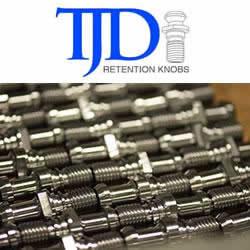Using Advanced Cooling Techniques to Reduce Cycle Times and Improve Quality in Injection Molding
.jpg)
The cooling stage of injection molding comprises most of the cycle time, making it essential to find effective ways to complete it efficiently. Additionally, if parts do not cool down enough or cooling happens unevenly, they can shrink or warp, requiring time-consuming rework processes. Fortunately, numerous ways exist to accelerate cooling time while ensuring it happens effectively.
Design Molds for Effective Cooling
Traditional designs feature straight-line cooling channels machined directly into molds. However, a more advanced and better option is to design molds with conformal cooling channels. These possibilities follow the precise curves of pieces as they cool, ensuring the process happens effectively, even in hard-to-reach areas.
People should also follow best practices for creating molds that will cool parts as quickly as possible. For example, building several smaller cooling channels into the mold rather than one large one will provide more consistent results. Additionally, when mold designers do incorporate larger channels, they should be of a single diameter throughout the mold.
Create a Digital Twin for Injection Molding
Many injection molding professionals eventually realize numerous factors — from the mold material to the location of its channels — affect the overall cooling time. How can they determine which combined elements lead to the best results? A digital twin is an excellent way to answer those all-important questions. It allows people to use a tool to test various options in a controlled environment before using them in real life.
In one example, researchers built a digital twin to reflect the process knowledge a person acquires while operating injection molding equipment. For example, it could recommend that someone check the cooling mechanisms for potential blockages after determining they are not performing as well as they should. A digital twin is also helpful for indicating the best places for bafflers or bubblers within the mold to optimize cooling.
People can test different options to see their pros and cons before working with the physical versions and spending anything to produce them. Then, they save money and materials and increase the chances of getting the best outcomes.
Consider Hybrid Production Approaches
Manufacturers often choose injection molding because it supports producing high volumes at affordable prices. Whether manufacturers need to make large car parts or small bottle caps, this method can handle those requirements and many others. However, despite its popularity, users still look for strategic ways to improve it.
For example, experiments indicate 3D printing can produce molds much faster than traditional methods. It can also make molds with conformal cooling channels, aligning with parts that have unusual or complex geometries. One company’s option combines injection molding, fused deposition modeling and CNC machining into a single approach. It allowed significant time savings for the clients using it.
One customer needed a faster way to produce cavity and core inserts to mold a 35% glass-filled part since the conventional method had a six-week lead time. The hybrid option required only two weeks and reduced hands-on toolmaking by up to 90%. When producers try various manufacturing methods and investigate suitable ways to combine them, it is easier to determine which methods will simultaneously cool the molded pieces to shorten cycle times while simultaneously boosting quality.
Remain Open-Minded When Exploring New Options
Giving injection-molded components enough time to cool is an important step in quality control. However, as these suggestions show, there are many effective and creative ways to reduce the cooling stage, making the overall cycle time shorter. Professionals should collect data to verify which methods they try work the best, and then consider changing internal processes to focus on using those high-performing techniques more often.
Comments (0)
This post does not have any comments. Be the first to leave a comment below.
Featured Product

